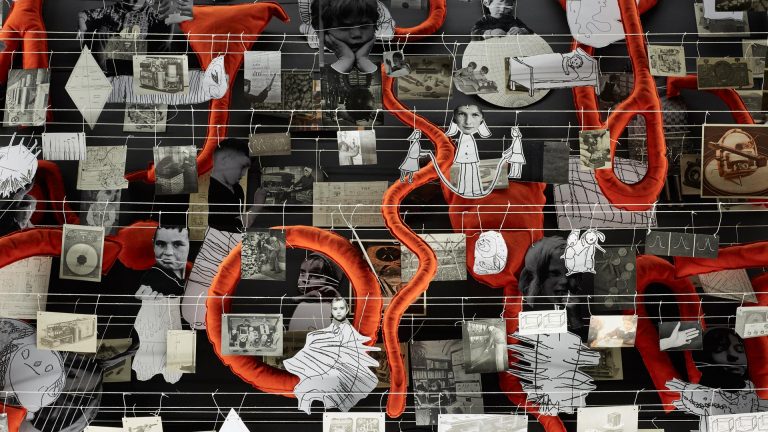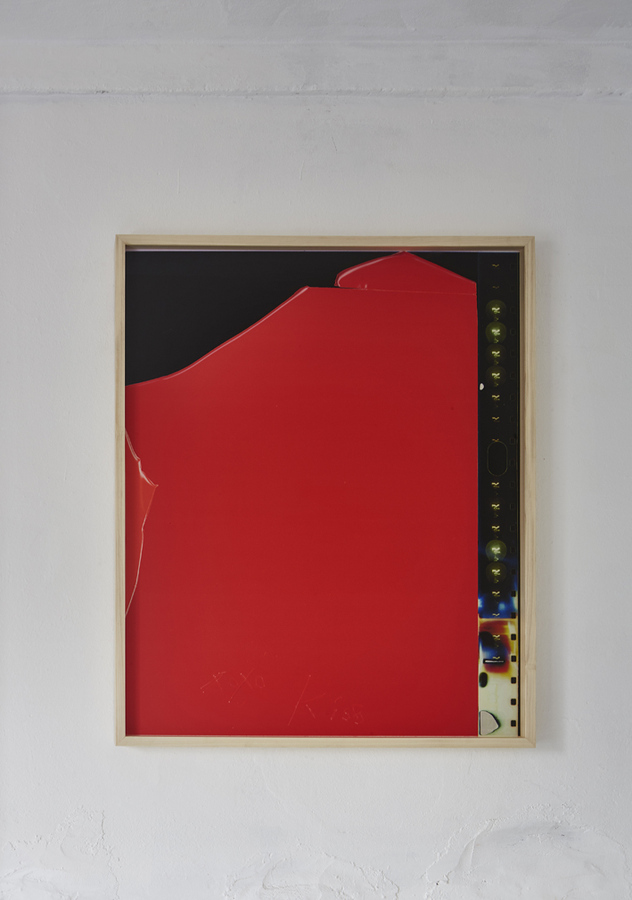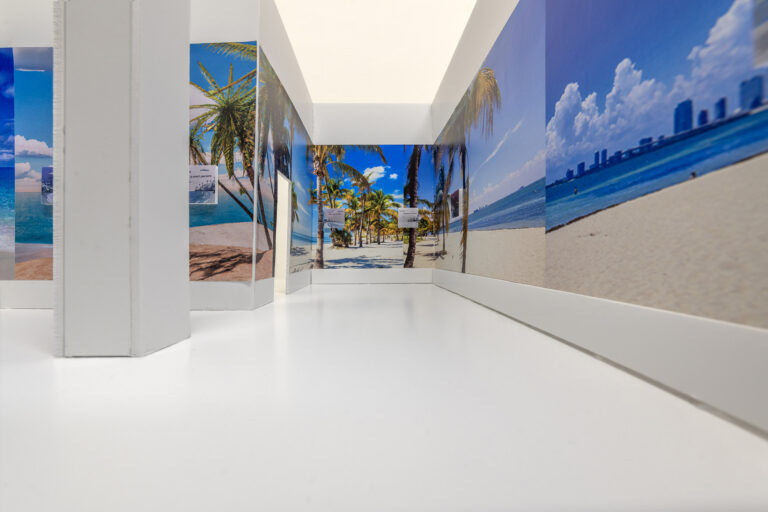Artist: Gaylen Gerber
Venue: Galerie Emanuel Layr, Rome, Italy
Date: November 25, 2017 – February 17, 2018
Photography: all images copyright and courtesy of the artist and Galerie Emanuel Layr, Vienna/Rome
An American artist once asserted “The great force of history comes from the fact that we carry it within us, are unconsciously controlled by it in many ways, and history is literally present in all that we do.”¹ In this exhibition Gerber presents a number of artworks that press the relationship between the loss of traditional orientations and the oscillating sense of joie de vivre that often remains and in doing so he addresses the ways in which we perceive expression and understand established records.
Gerber’s work relies on other artworks or artifacts and our sense of the history associated with them for much of its meaning. His work has long focused on the normative aspects of visual language: the way that we, as part of a shared culture, accept certain forms, colors and situations as institutional, or we take them for granted as impartial common ground. These visual norms act as grounds for all other forms of expression and we use them to register difference and create meaning. In some instances Gerber’s work has literally been the ground for other artists’ expression and in turn, he also uses other artists’ work as a normative ground against which his, and our own expressions can be recognized. As a result, everything in the exhibition is acknowledged as alternately both support and expression.
In Gerber’s Supports the original representation has been replaced with a homogeneous value. For example, the polychrome pictorial glazed surface that helped define the Kashiki bowl from the late Tokugawa or Edo Period Japan has been replaced by an alternate surface. The same is true for Support, a sādhu trumpet from late 19th or early 20th century Nepal, leaving just the homogeneous value of the painted surface visible. In both instances, the everyday is reaffirmed but the implications are existential. The associations of this surface are explicit in the history of the monochrome and alternate aspects of the Supports become readily apparent.
The result is an inversion of established ideas of art as a place to locate history within a particular context. Artworks and artifacts that are most often seen as records of the past: a Lokapala guardian figure from the Tang Dynasty in China; an Impossible Bottle from the 20th century United States; a drug spatula from the Chimu culture in Northern Peru, are understood in the moment of their perception. The power that artworks and artifacts from the past have to evoke delight, distress, empathy – a range of emotions – is a reflection of their continued effectiveness, and because of the reversal of the figure and ground all of the Supports share a standard surface that also functions to reflect a clear image not only of our relationship to the past but of the present.
Gaylen Gerber (American b. 1955) has exhibited widely including projects at Kunsthaus Bregenz, Bregenz, Austria; the Whitney Museum of American Art, New York, New York; Kunstverein Ruhr, Essen, Germany; Museé d’Art Moderne Grand-Duc Jean, Luxembourg; The Art Institute of Chicago, Chicago, Illinois; Neues Museum Weserburg Bremen, Bremen, Germany; Kunsthalle Bern, Bern, Switzerland; and the Museé des Beaux-Arts, Dijon, France among others.
¹ James Baldwin, The Price of the Ticket: Collected Nonfiction, 1948-1985
Gaylen Gerber, 2017-2018, exhibition view, Galerie Emanuel Layr, Rome
Gaylen Gerber, 2017-2018, exhibition view, Galerie Emanuel Layr, Rome
Gaylen Gerber, 2017-2018, exhibition view, Galerie Emanuel Layr, Rome
Gaylen Gerber, Support, n. d., oil paint on cinematic prop of severed ear from The Hughes Brothers’ Dead Presidents, 1995, 2 x 6 x 4 cm; Gaylen Gerber, Support, n. d., oil paint on Colt 45 Malt Liquor 16 fl. oz. can, United States, printed aluminum, paper, 21st century, 19,5 x 11,5 x 18,8 cm
Gaylen Gerber, Support, n. d., oil paint on cinematic prop of severed ear from The Hughes Brothers’ Dead Presidents, 1995, 2 x 6 x 4 cm; Gaylen Gerber, Support, n. d., oil paint on Colt 45 Malt Liquor 16 fl. oz. can, United States, printed aluminum, paper, 21st century, 19,5 x 11,5 x 18,8 cm
Gaylen Gerber, Support, n. d., oil paint on fragment of 3400 Wilshire Boulevard, Los Angeles, CA, concrete, based mount, 20th century, 23,5 x 17,5 x19 cm
Gaylen Gerber, 2017-2018, exhibition view, Galerie Emanuel Layr, Rome
Gaylen Gerber, Support, n. d., oil paint on 12 fl. oz. aluminum can, United States, Anheuser-Busch, printed aluminum, 21st century, 13 x 7,6 x 6,3 cm
Gaylen Gerber, 2017-2018, exhibition view, Galerie Emanuel Layr, Rome
Gaylen Gerber, 2017-2018, exhibition view, Galerie Emanuel Layr, Rome
Gaylen Gerber, Support, n. d., oil paint on Lipico (helmet mask), Makonde people, Tanzania, wood, pigment, 20th century, 21,5 x 25,5 x 17,5 cm
Gaylen Gerber, Support, n. d., oil paint on sādhu trumpet (Hindu trumpet), Nepal, horn, based mount, late 19th – early 20th century, 14 x 20 x 5 cm
Gaylen Gerber, 2017-2018, exhibition view, Galerie Emanuel Layr, Rome
Gaylen Gerber, 2017-2018, exhibition view, Galerie Emanuel Layr, Rome




















